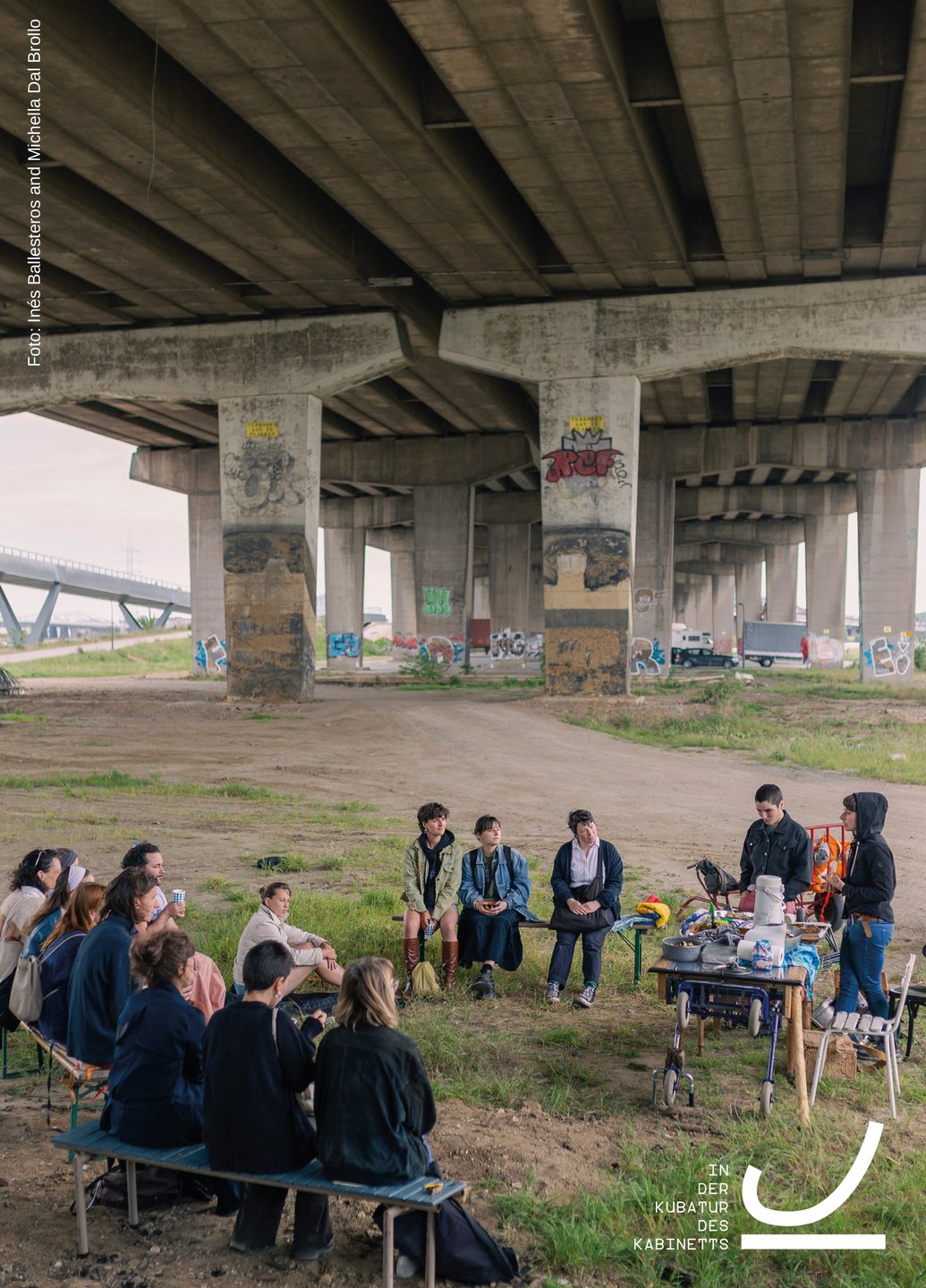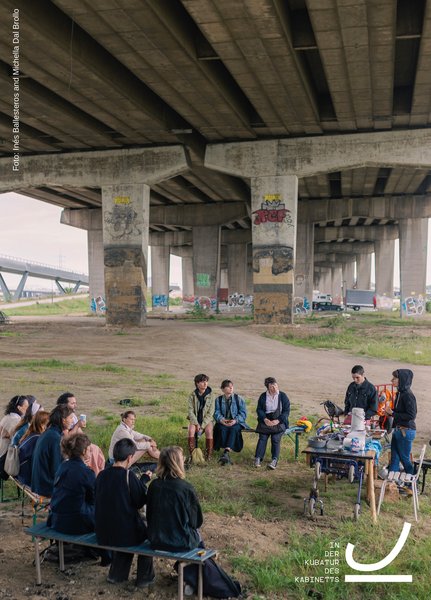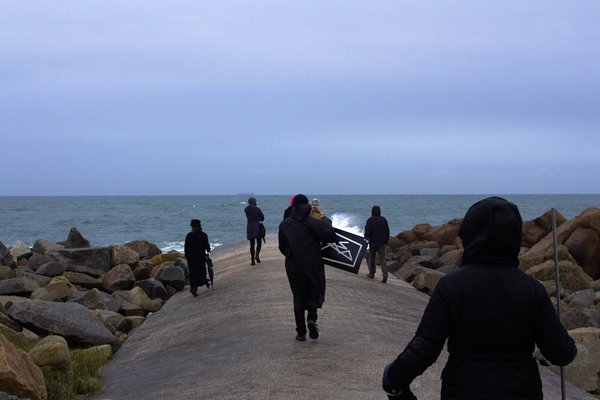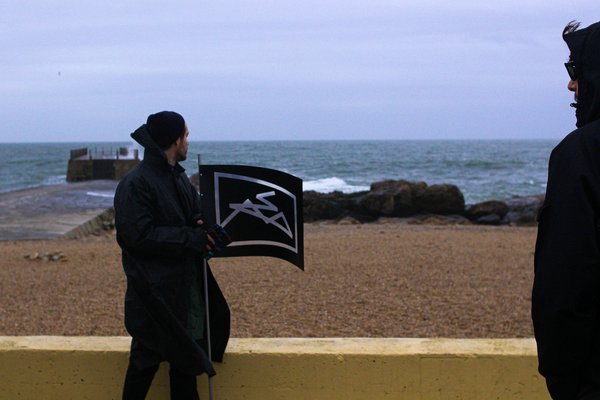
Sa, 27. Sep 2025
10:00 Uhr
@Deck, Praterstern
for translation use the globe button
Meeting point: FLUCC : Praterstern 5, Wien, Österreich 1020
Saturday 27th - 10h to 12h
Living Equipment :Portable spaces - Workshop - public space action
Imagining and printing urban liminal entities as a collective action
What elements and infrastructure surround us in public spaces, and how could they be transformed to be more welcoming, mobile, sensitive, critical, etc.?
In this session, we will rethink the conventional functions of urban furniture and infrastructure, getting inspired by how plants and animals inhabit and adapt to different ecosystems.
We will start with a walk to observe and interpret the public space elements that surround us. The ideas that emerge from speculating and transforming those elements will be gathered into collective prints, using a low-tech and portable printing technique called hectograph or gelatine print.
This session organised for a maximum of 15 people
No previous experience is needed
Living Equipment:
Portable Spaces is a collaborative project by Michela Dal Brollo and Inés Ballesteros, centered on creating portable relational and conceptual devices. These tools, made entirely from recycled materials, are designed for site-specific research and foster encounters and exchanges in public spaces. The project applies nomadic principles to explore sustainability within mobility, collaborating with existing activities and infrastructures. The work investigates urban liminal spaces—transitional zones with unique relational dynamics, geography, and temporal perceptions. By engaging with these spaces, the artists connect with their past stories and envision future possibilities. Through this approach, "Living Equipment" challenges conventional uses of space, promoting alternative narratives and sustainable practices. Possible works to exhibit as public space workshop: cum-panis, food-library, gelatinografo, and portable library.
Curatorial Text
Belonging < the Space > of Togetherness is an artistic project that responds to the climate crisis by activating collective imagination and emphasizing social responsibility. It explores how we inhabit and co-create public space, fostering dialogue, social engagement, and resistance to extractive systems. Through site-specific installations, a public action, and a short film program, the exhibition proposes new models of sustainable coexistence, alternative practices, and emerging economies.
The exhibition features a flag made from recycled fabrics by a migrant women’s cooperative as part of the From the Top of the Mountains We Can See Invisible Monuments project, along with billboard works by Orlando Vieira Francisco, Ana Paula Franco, Inés Ballesteros and Michela Dal Brollo. In addition, Living Equipment: Portable Spaces by Michela Dal Brollo and Inés Ballesteros is presented — a mobile relational device constructed from recycled materials, designed to activate encounters and reimagine the use of urban space. A program of short films by international artists expands these conversations through poetic and political perspectives.
Belonging < the Space > of Togetherness is part of the project From the Top of the Mountains We Can See Invisible Monuments, which is supported by the Portuguese Directorate-General for the Arts, the Portuguese Foundation for Science and Technology, the University of Porto, and the Calouste Gulbenkian Foundation.
As part of the “IN DER KUBATUR 2025” series at FLUCC, the exhibition promotes sustainable materials, community-led actions, and eco-social engaged dialogue — imagining new ways of being together that resist isolation and embrace collective transformation.
Work Description
From the Top of the Mountain We Can See Invisible Monuments, Billboards and flag
"From the Top of the Mountain We Can See Invisible Monuments" aims to create structures of visibility and communication as a response to "infrastructure spaces" that avoid taking responsibility for damaging the environment. This project, developed in collaboration with artists, includes visual pieces for the FLUCC billboards and a flag installation made from recycled fabrics.
The project critiques unsustainable economic and production processes, proposing a network for knowledge-sharing and advocacy for responsible environmental practices. The work fosters a critical dialogue about the invisible yet impactful infrastructures shaping our world through its installations, promoting awareness, and inspiring sustainable alternatives.
Living Equipment: Portable Spaces, Billboard and participatory excursion on the 27.09.2025 // 10:00 meeting point FLUCC
Living Equipment: Portable Spaces is a collaborative project by Michela Dal Brollo and Inés Ballesteros, centered on creating portable relational and conceptual devices. These tools, made entirely from recycled materials, are designed for site-specific research and foster encounters and exchanges in public spaces. The project applies nomadic principles to explore sustainability within mobility, collaborating with existing activities and infrastructures.The work investigates urban liminal spaces—transitional zones with unique relational dynamics, geography, and temporal perceptions. By engaging with these spaces, the artists connect with their past stories and envision future possibilities. Through this approach, "Living Equipment" challenges conventional uses of space, promoting alternative narratives and sustainable practices. Possible works to exhibit as public space workshop: cum-panis, food-library, gelatinografo, and portable library.
Selected short films:
Part 1
“Erratic Lands” by Julian Berger (2025, 11'36'')
"The Last Summer" by Inés Ballesteros, Michela Dal Brollo and Alicja Nowicz (2023, 9’)
"In erster Linie / First and Foremost" by Veronika Schubert (2016, 5'30'')
"More Mountains More Seas” by OVF (2023, 10’)
"Pavor Nocturnus" by Mariela Schöffmann (2023, 6'33)
“Celestial Twins” by Chana de Moura (2019, 8')
“Der Abzug” by Sara-Lisa Bals (2021, 5'23'')
Part 2
"Respigar Espinhos" by Inés Ballesteros and Michela Dal Brollo (2024, 12’)
"Eremocene / Eremozän" by Mariela Schöffmann (2021 5'22'')
“Pantelas”, by José Oliveira (2018, 35')
Artists
Orlando Vieira Francisco is visual artist and researcher at i2ADS (FBAUP, Portugal). He has worked in the public space through workshops, lectures, performances, and other self-managed practices, as well as working with photography, drawing, installation, and sculpture techniques. He works within the themes of the production of social space between art and politics, the landscape as an object of constant change, and practices of environmental and social activism.
Ana Paula Fabro Franco is a Brazilian artist living and working in Vienna, Austria. Graduated at the Academy of Fine Arts Vienna in the Art and Photography class, Franco explores the representation of memory and trauma on the surface of objects and the body. Not only the light, but different materials such as wax, are then manipulated to expose what’s hidden, sometimes in plain sight, sometimes in darkness.
Inés Ballesteros is a visual artist whose work unfolds in different media. In her practice, she researches how articulations of public space that tend to control and privatization are contested through temporary infiltrations or re-appropriations, looking at the tensions and negotiations inherent to collective processes and public space. Her art practice has been developed at the intersection of her participation in activism and self-organizing projects and different spaces.
Michela Dal Brollo is a visual artist graduated from the Royal Academy of Fine Arts Antwerp. Dal Brollo is interested in the intrusive capacity of artistic practices in pre-existing processes and in exploring how art can be used as a medium to observe, collect, interpret, reveal, or trigger human and non-human relationships. She is interested in the notion of space in movement, which she often translates into performative installations and mobile sculptures.
Alicja Nowicz is a multimedia artist and performer whose practice explores informality and improvisation as tools for challenging established socio-cultural norms. Working through relational art and performative interventions in public space, she reflects on the complexities of Eastern European identity in transition.
Veronika Schubert is a Vienna based Austrian animator and fine artist. Veronika Schubert's main interest lies in language and analyzing media genres. Animation techniques vary from knitting, drawing, folding paper, drawing and erasing ink, engraving glass up to digital montages and software generated imagery.
Mariela Schöffmann is an artist based in Vienna whose work draws on painting, printmaking, and animation to explore contemporary visual expression. She studied at the Academy of Fine Arts Vienna from 2008 to 2015, where she was part of the Contextual Painting class led by Ashley Hans Scheirl, and also trained in printmaking techniques with Gunter Damisch and artistic animation film with Thomas Renoldner. Prior to that, she attended the Master Class in Painting at Ortweinschule Graz (2005–2007) under the guidance of Richard Frankenberg and Hans Szyszkowitz.
José Oliveira was born in Braga, Portugal, in 1986,lives and works between Bregenz and Porto. He has been researching and developing artistic proposals that address issues related to the world of labour. In his most recent works, he has been questioning the concept of artistic production and its appreciation.
Chana de Moura is a Brazilian visual artist, researcher and illustrator.
Sara-Lisa Bals, born in Vorarlberg in 1993, is an interdisciplinary artist in the fields of theatre, space art, and media. An alumna of the University of Applied Art Vienna’s Stage and Film Design as well as Transmedia Art classes, she currently lives and works in Vienna.
Julian Berger is an Austrian visual artist, working between architecture and visual research.
Asifeh is a producer/rapper based between Vienna and Ramallah. His music consists of rap vocals, sampled material, and original compositions using modern and abandoned technologies.
Bandim Cooperative is a multi-brand platform based in Lisbon dedicated to empowering artisans, especially immigrants, by transforming them into entrepreneurs. Operating as a creative and training space, Bandim offers sewing and tile-making workshops, where individuals from diverse backgrounds find opportunities to develop their skills and start their own businesses.



